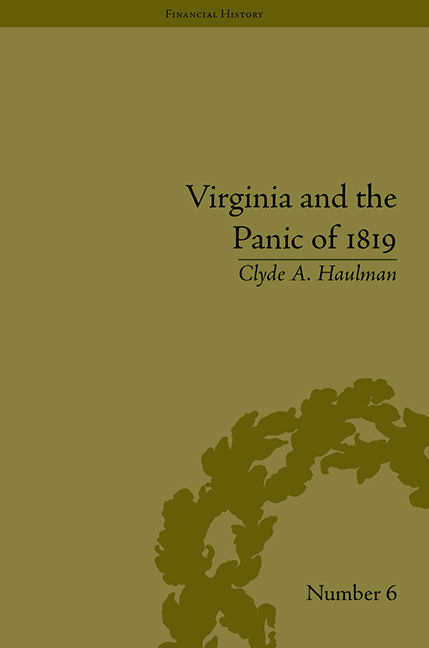Book contents
2 - An Overview of the Panic of 1819
Summary
Contemporary observers indicate that the Panic of 1819 was a traumatic experience for the new republic. For example, John C. Calhoun, discussing the situation with John Quincy Adams in 1820, said, ‘There has been within these two years an immense revolution of fortunes in every part of the Union: enormous numbers of persons utterly ruined; multitudes in deep distress; and a general mass disaffection to the government’. In the Boston newspapers, Andrew R. L. Cayton found that ‘complaints of Hard Times appear universal’ and that what was once a thriving town ‘presents a dull and uncheery spectacle – silence reigns in the streets’. Hezekiah Niles in his Register reported that a Philadelphia committee found that employment in thirty industries studied declined ‘from 9672 in 1816 to 2137 in 1819; weekly wages were down from $58,000 to $12,000’, and Niles himself estimated that in New York, Philadelphia and Baltimore some 50,000 were ‘either unemployed or irregularly employed’. Niles also reported that in Philadelphia ‘houses which rented for 1,200 dollars, now rent for 450 dollars, fuel which costs 12 dollars, now costs 4 1/2; beef 25 cents now 8 cents; other things in proportion’. From Pittsburgh a citizens’ committee ‘stated that certain manufacturing and mechanical trades in their city and its vicinity, which employed 1960 persons in 1815, employed only 672 in 1819’. And, in Virginia, as in virtually every corner of the Union, property had depreciated dramatically. For example, in Richmond where ‘the spirit of land speculation’ had been rife, a new town had been ‘laid off on paper above the city, called the town of Sidney’. At the outset, ‘land sold readily for one thousand dollars per acre’. Once hard times began, such land would not ‘bring one hundred’.
Macroeconomic Overview
The young nation's ‘traumatic awakening to the capitalist reality of boom-and-bust’ reported by these various sources was a complex combination of financial market volatility, swings in international market demand, and federal government financial activity.
- Type
- Chapter
- Information
- Virginia and the Panic of 1819The First Great Depression and the Commonwealth, pp. 25 - 38Publisher: Pickering & ChattoFirst published in: 2014

